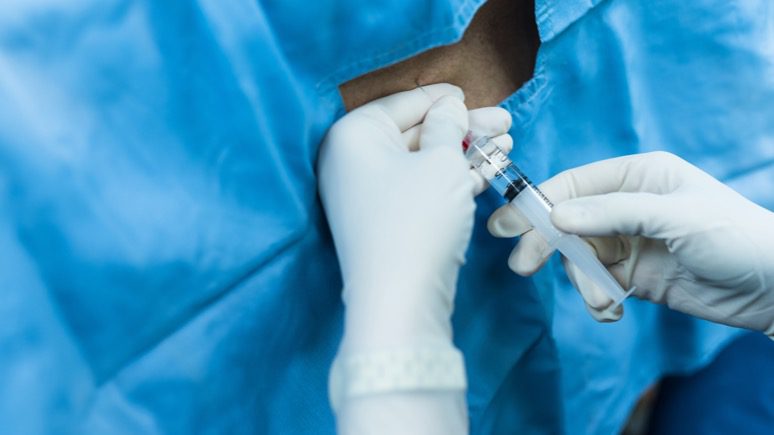Lumbar Radiculopathy Treatment
Usually, non-surgical options are recommended first for lumbar radiculopathy treatment. Standard therapy includes pain medications, physical therapy, and, in some cases, steroid injections. If symptoms don’t improve within two months or the condition worsens, a doctor may recommend a lumbar radiculopathy surgery. In cases of muscle weakness or other severely debilitating problems, the physician may recommend beginning with surgery rather than trying conservative lumbar radiculopathy treatments. However, most patients experience significant relief from their symptoms using only standard therapy. The last may include anti-inflammatory medications, noninvasive therapy or chiropractic, and avoiding actions that strain the neck or back. The dominant part of radiculopathy patients react well to this treatment, and symptoms frequently improve within 6 to 12 weeks.
Home Care for Lumbar Radiculopathy Patients
Usually, it is recommended to restrict exercises that aggravate your pain. A doctor can suggest supports, props, or neck braces to immobilize the affected area. These devices make it easier for you to recover from the injury. Your healthcare provider can also prescribe bed rest or medications for lumbar radiculopathy management. In addition, some patients may find beneficial the utilization of weights or other external devices to alleviate pressure on the spinal nerve by stretching the spine.
Additionally, your healthcare provider may recommend exercise-based physical therapy to help you recover. Physical therapy can also involve the use of heat and cold treatments and different medicines. Your advisor can show you methods to strengthen, stretch, and treat an affected area.
Some patients find weight loss beneficial for reducing pressure on the affected nerve.
Lumbar Radiculopathy Medications
The doctor may prescribe medications for lumbar radiculopathy patients to alleviate their symptoms, including:
- analgesics
- nonsteroidal anti-inflammatory drugs, for example, ibuprofen (Advil) and naproxen (Aleve)
- muscle relaxants
- oral corticosteroids
- solution opioids for severe pain
- spinal corticosteroid infusions into the influenced zone
Non-surgical Lumbar Radiculopathy Treatment
Radiculopathy can be effectively treated with standard therapy in many cases. The last includes the use of over-the-counter pain relievers, anti-inflammatory, and steroidal medicines under the supervision of a physician. The patient may benefit from oral cortisone administration if the pain is mild. In the case of severe pain, epidural injections of corticosteroids can help relieve the symptom. In this procedure, a doctor infuses steroid solution between the bones of the spine nearby the affected nerves with the assistance of an X-ray machine. It works by soothing inflammation and swelling in the herniated disc and reducing nerve irritation.
Most patients experience an improvement in their pain using a combination of physical activity, anti-inflammatory and muscle relaxing pharmaceuticals, and time. In addition, patients who suffer from pain when sitting find relief by lying flat or walking/standing.
Lumbar Radiculopathy Surgery
If your condition doesn’t improve after around 6 to 12 weeks of prior treatment, the doctor may suggest lumbar radiculopathy surgery. In addition, a healthcare provider may recommend this procedure when multiple nerves are damaged or the pain persists despite the treatment. Lumbar radiculopathy surgery can relieve the pressure on the affected nerve.
A discectomy is one of the surgical procedures used for lumbar radiculopathy treatment. It involves the removal of the herniated disc material that presses on the spinal cord or a nerve root. This procedure poses risks like any surgery, including diseases, anesthesia complications, and even death.
Laminectomy is another procedure used to manage lumbar radiculopathy. The surgeon removes part or all of the vertebra (lamina) during this surgery. This procedure relieves pressure on the spinal cord or nerve roots that may result from injury, spinal stenosis, tumor, or disc herniation.
Prevention of Lumbar Radiculopathy
There is no known way to prevent lumbar radiculopathy but to keep your back healthy, maintain a healthy weight, practice good posture and incorporate some weight-bearing exercise such as walking into your daily routine.
















Leave a Reply
You must be logged in to post a comment.